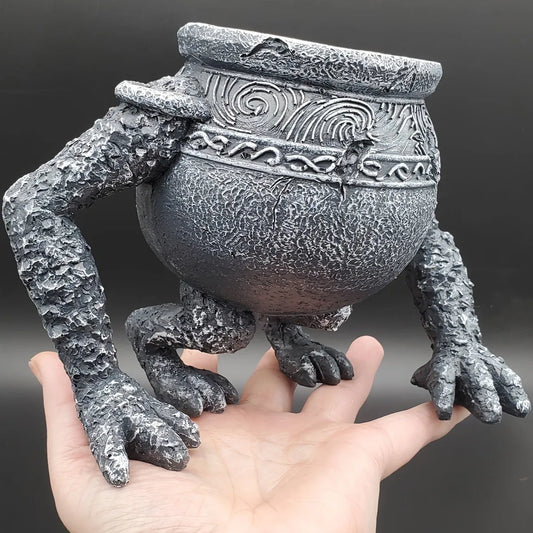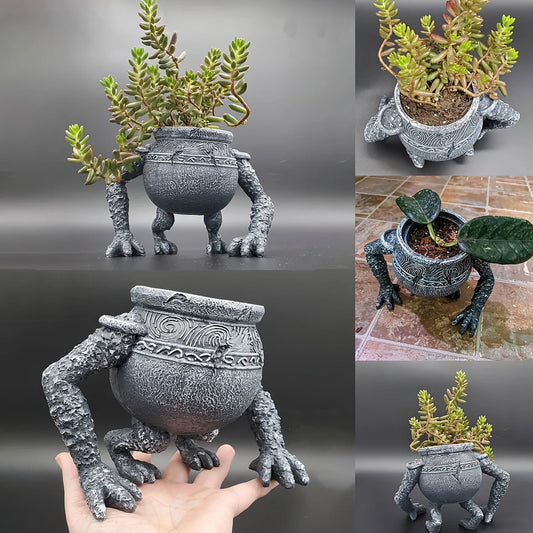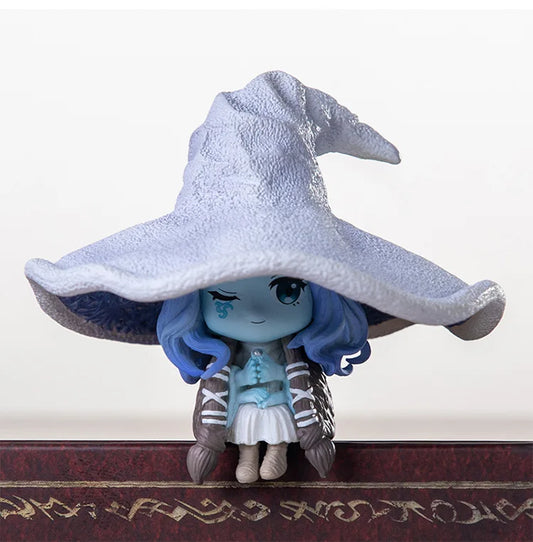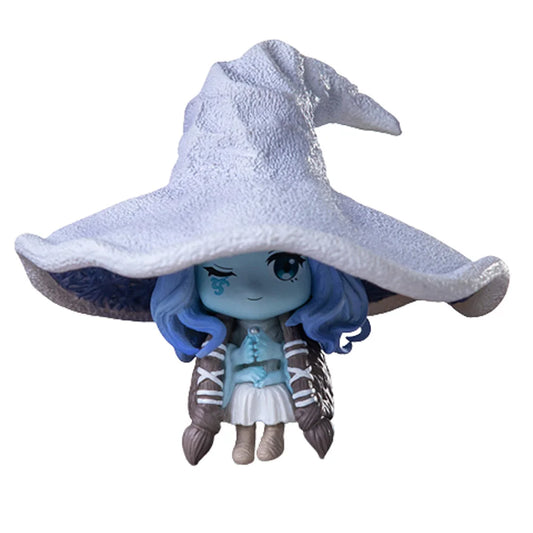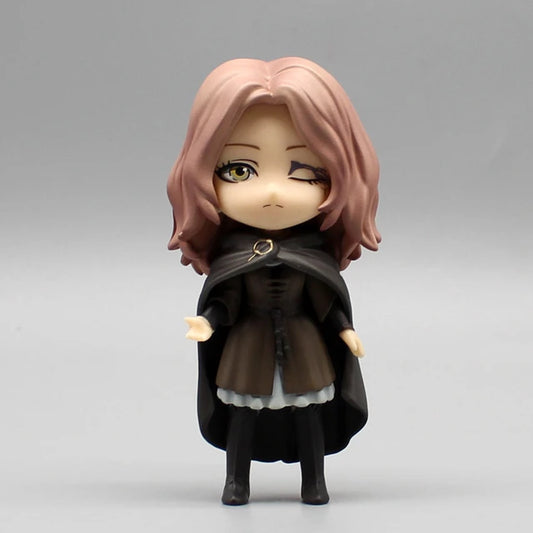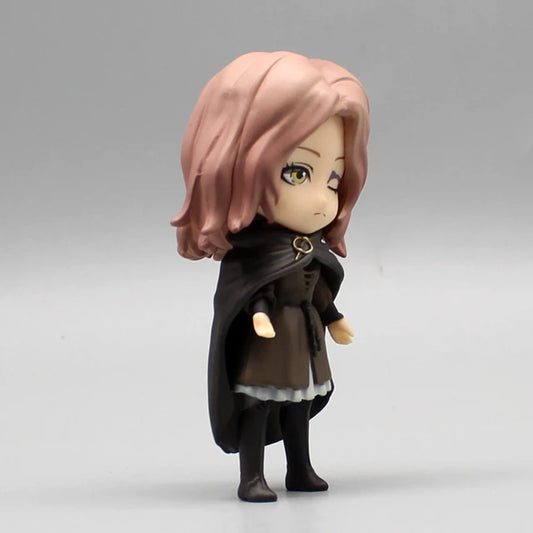Unraveling the Mythological Tapestry of Elden Ring: A Deep Dive into Its Lore and Influences
In the vast landscape of video game narratives, few titles have captured the imagination of players and scholars alike quite like Elden Ring. This masterpiece, born from the collaboration between the visionary game director Hidetaka Miyazaki and the renowned fantasy author George R.R. Martin, presents a world steeped in mystery and rich mythology. As we embark on this journey through the Lands Between, we'll uncover the intricate web of influences that shape Elden Ring's unique mythological framework, drawing from Celtic, Norse, and Christian traditions to create a narrative tapestry unlike any other in gaming history.
The Enigmatic World of Elden Ring
Elden Ring's mythology is a testament to the power of collaborative storytelling. The game's world, with its shattered realms and fallen demigods, presents a narrative that is both familiar and utterly alien. Players find themselves in a land where the natural order has been disrupted, and ancient powers vie for control over the remnants of a once-great civilization.
The game's lore is not merely a backdrop for its challenging gameplay; it is an integral part of the experience, woven into every aspect of the game, from item descriptions to environmental storytelling. This depth has led to an unprecedented level of player engagement, with communities across the globe dedicating countless hours to unraveling the mysteries of the Lands Between.
The Architects of Myth: Miyazaki and Martin
The collaboration between Hidetaka Miyazaki and George R.R. Martin represents a unique confluence of talent in the gaming industry. Miyazaki, known for his cryptic storytelling and challenging game design, found a kindred spirit in Martin, whose complex world-building in "A Song of Ice and Fire" has captivated readers worldwide.
According to Miyazaki, "The mythos of Elden Ring was constructed as a joint project between FromSoft head Hidetaka Miyazaki and George R.R. Martin, which should give you an idea of just how deep and deranged the story gets"
This collaboration has resulted in a game world that feels both ancient and immediate, with a depth of lore that continues to unfold long after the credits roll.
The Mythological Melting Pot
Elden Ring's mythology draws from a diverse array of sources, creating a unique blend that defies simple categorization. Let's explore the primary influences that shape the game's rich lore:
Celtic Mythology
The influence of Celtic mythology in Elden Ring is subtle yet pervasive. One of the most striking examples is the presence of fire giants, reminiscent of the Fomorians from Irish mythology. These ancient beings, often associated with chaos and destruction, play a crucial role in the game's backstory, much like their mythological counterparts.
Another Celtic element is the concept of "True Names," a powerful magical principle in many Celtic tales. In Elden Ring, knowing and using a character's true name can have significant implications, reflecting the Celtic belief in the power of words and names.
Norse Mythology
Norse influences are perhaps most evident in the game's themes of eternal rule and the avoidance of death. The character of Queen Marika, often depicted in a crucifixion pose, bears similarities to Odin's self-sacrifice on Yggdrasil, the world tree. This parallel is further reinforced by the presence of the Erdtree, a central element in Elden Ring's cosmology that echoes Yggdrasil's role in Norse myth.
The game's focus on cycles of death and rebirth, as well as the concept of a fated end to the current order, resonates strongly with Norse eschatology, particularly the idea of Ragnarök.
Christian Mythology
Christian influences in Elden Ring are most apparent in its imagery and themes of sacrifice. Queen Marika's crucifixion pose is a clear nod to Christian iconography, while her role as both creator and sacrifice within the game's mythology mirrors Christ's dual nature in Christian theology.
The concept of grace, a central mechanic in the game, also has strong Christian overtones, representing divine favor and guidance in a hostile world.
Central Elements of Elden Ring's Mythology
To truly understand Elden Ring's mythological framework, we must examine its core elements:
The Erdtree
At the heart of Elden Ring's world stands the Erdtree, a colossal golden tree that dominates the landscape. More than just a geographical landmark, the Erdtree represents the current cosmic order, established by the Greater Will. It serves as a source of life and power, but also as a symbol of control and stagnation.
The Lands Between
The game's setting, known as the Lands Between, is a realm existing outside the normal flow of time and space. This liminal space serves as a perfect backdrop for the game's exploration of cycles, rebirth, and the tension between order and chaos.
The Greater Will
A mysterious outer god, the Greater Will is the unseen force behind much of Elden Ring's conflict. Its desire for order and control, manifested through the Golden Order and the Erdtree, stands in opposition to the chaotic forces seeking to reshape the world.
Community Engagement and Lore Analysis
The depth and ambiguity of Elden Ring's lore have spawned a vibrant community dedicated to its analysis and interpretation. Players and scholars alike have created extensive timelines, character studies, and theories attempting to piece together the full narrative of the Lands Between.
As of 2024, Elden Ring has maintained a strong player base, with significant engagement around its lore and upcoming DLCs. This ongoing interest is a testament to the richness of the game's mythology and the success of Miyazaki and Martin's collaborative approach to world-building.
Impact on the Gaming Industry
Elden Ring's approach to storytelling and mythology has set new standards for narrative depth in video games. Its success has influenced other developers to create more complex and engaging lore, pushing the boundaries of what's possible in interactive storytelling.
The game's ability to weave its mythology into every aspect of the player experience, from environmental design to item descriptions, has been particularly impactful. This approach has shown that deep, complex narratives can coexist with challenging gameplay, creating a more immersive and rewarding experience for players.
Comparing Mythologies
To better understand Elden Ring's unique blend of influences, let's compare it to its primary mythological sources:
| Mythology | Similarities with Elden Ring | Differences |
|---|---|---|
| Celtic | Fire giants, concept of True Names, tripartite death | More focused on local deities and folklore |
| Norse | World tree (Erdtree/Yggdrasil), themes of eternal rule and fate | Greater emphasis on the end of the world (Ragnarök) |
| Christian | Crucifixion imagery, themes of sacrifice and grace | More linear narrative structure, clear moral dichotomies |
Unraveling Elden Ring's Mythology: A How-To Guide
For those looking to delve deeper into Elden Ring's lore, here are some strategies to enhance your understanding:
-
Analyze item descriptions and environmental storytellingPay close attention to the descriptions of items you collect and the details in the game's environment. These often contain crucial lore information.
-
Connect character storylinesFollow the questlines of various NPCs and try to understand how their stories interconnect and contribute to the larger narrative.
-
Explore thoroughlyMany of the game's most significant lore revelations are hidden in optional areas or behind challenging encounters. Thorough exploration is key to understanding the full story.
-
Participate in community discussionsJoin online forums, Reddit communities, or Discord servers dedicated to Elden Ring lore. Engaging with other players can provide new perspectives and insights.
-
Study the influencing mythologiesFamiliarize yourself with Celtic, Norse, and Christian mythologies to better recognize and appreciate the game's references and inspirations.
Frequently Asked Questions
What role did George R.R. Martin play in creating Elden Ring's mythology?
How does Elden Ring's mythology differ from other FromSoftware games?
Are there any direct parallels between Elden Ring's characters and mythological figures?
How does the game's multiple ending system tie into its mythology?
What is the significance of the Elden Ring itself within the game's lore?
Challenges and Solutions
Understanding Elden Ring's complex lore presents several challenges:
-
Complexity of the lore: The sheer depth and intricacy of the game's mythology can be overwhelming.
- Solution: Use community resources and guides to build a foundational understanding before diving into deeper analysis.
-
Ambiguity in storytelling: Much of the game's narrative is open to interpretation, which can lead to confusion.
- Solution: Embrace multiple interpretations and theories, understanding that ambiguity is a deliberate part of the storytelling approach.
-
Balancing gameplay and lore exploration: The challenging nature of the game can make it difficult to focus on lore discovery.
- Solution: Consider multiple playthroughs, focusing on different aspects of the game in each run.
Ethical Considerations and Best Practices
As we engage with Elden Ring's mythology, it's important to keep certain ethical considerations in mind:
- Respecting original mythological sources: While drawing parallels to real-world myths, we should be mindful of the cultural significance of these stories and avoid oversimplification or misrepresentation.
- Respecting original mythological sources: While drawing parallels to real-world myths, we should be mindful of the cultural significance of these stories and avoid oversimplification or misrepresentation.
- Fostering inclusive and respectful community discussions: Encourage diverse perspectives and interpretations while maintaining a respectful dialogue within the community.
- Balancing creative interpretation with factual analysis: While creative theories are part of the fun, it's important to ground discussions in the factual information provided by the game.
Success Stories
The depth of Elden Ring's lore has inspired numerous success stories within the gaming community:
- Community-driven lore projects: Collaborative efforts like the Elden Ring Lore Hunt have brought together thousands of players to collectively unravel the game's mysteries.
- YouTube channels: Content creators like VaatiVidya have built successful channels dedicated to analyzing and explaining Elden Ring's lore, attracting millions of views.
- Fan-created art and literature: The game's rich mythology has inspired countless pieces of fan art, fiction, and even scholarly articles exploring its themes and influences.
Tools and Resources
For those looking to delve deeper into Elden Ring's lore, several resources are available:
- Elden Ring Wiki: A comprehensive database of game information, including detailed lore entries.
- Lore compilation videos: YouTube channels like VaatiVidya offer in-depth analysis and storytelling based on the game's lore.
- Books on mythology: Works on Celtic, Norse, and Christian mythologies can provide valuable context for understanding the game's influences.
Conclusion
Elden Ring's mythology stands as a testament to the power of collaborative storytelling and the enduring appeal of mythological narratives. By blending elements from Celtic, Norse, and Christian traditions with original ideas, Miyazaki and Martin have created a world that feels at once familiar and utterly unique.
As players continue to explore the Lands Between and uncover new secrets, the full scope of Elden Ring's mythology continues to unfold. This ongoing process of discovery and interpretation ensures that the game will remain a subject of fascination and study for years to come.
The lasting impact of Elden Ring's approach to mythology and narrative in gaming cannot be overstated. It has set a new standard for depth and complexity in video game storytelling, challenging both developers and players to engage with games as rich, multi-layered texts worthy of serious analysis and interpretation.
As we look to the future, with upcoming DLCs like Shadow of the Erdtree on the horizon, one thing is certain: the enigmatic world of Elden Ring will continue to captivate, challenge, and inspire players and scholars alike, cementing its place as a landmark achievement in the realm of interactive storytelling.
Additional Resources
For those seeking to further explore the depths of Elden Ring's mythology, the following resources may prove invaluable:
- Official Elden Ring website and social media channels: Stay up-to-date with official announcements and lore reveals.
- Scholarly articles on video game narratives and mythology: Academic works exploring the intersection of gaming and mythology can provide deeper insights into Elden Ring's narrative techniques.
- Interviews with Hidetaka Miyazaki: Gain insights directly from the game's creator on his approach to world-building and storytelling.
- The Elden Ring subreddit: A vibrant community dedicated to discussing all aspects of the game, including its lore and mythology.
- Mythology reference books: Works like "The Golden Bough" by James George Frazer or "The Hero with a Thousand Faces" by Joseph Campbell can provide valuable context for understanding mythological themes and structures.
As we continue to unravel the mysteries of the Lands Between, these resources will serve as valuable tools in our quest to fully comprehend the rich and complex mythology of Elden Ring. The journey of discovery is far from over, and each new insight only deepens our appreciation for this remarkable achievement in interactive storytelling.


